Stages of World War II: causes, beginning, main battles, losses, outcome. World War II (1939-1945)
The largest in human history, the Second World War was a logical continuation of the First World War. In 1918, Kaiser's Germany lost to the Entente countries. The result of the First World War was the Treaty of Versailles, according to which the Germans lost part of their territory. Germany was forbidden to have a large army, navy and colonies. An unprecedented economic crisis began in the country. It worsened even more after the Great Depression of 1929.
German society survived its defeat with difficulty. There were massive revanchist sentiments. Populist politicians began to play on the desire to “restore historical justice”. The National Socialist German Workers' Party, headed by Adolf Hitler, began to enjoy great popularity.
Causes
Radicals came to power in Berlin in 1933. The German state quickly became totalitarian and began to prepare for the coming war for supremacy in Europe. Simultaneously with the Third Reich, its "classic" fascism arose in Italy.
The Second World War (1939-1945) is an event not only in the Old World, but also in Asia. Japan has been a source of concern in this region. In the Land of the Rising Sun, just like in Germany, imperialist sentiments were extremely popular. China, weakened by internal conflicts, became the object of Japanese aggression. The war between the two Asian powers began in 1937, and with the outbreak of conflict in Europe, it became part of the general Second World War. Japan became an ally of Germany.
In the Third Reich, he left the League of Nations (the predecessor of the UN), stopped his own disarmament. In 1938, the Anschluss (accession) of Austria took place. It was bloodless, but the causes of World War II, in short, were that European politicians turned a blind eye to Hitler's aggressive behavior and did not stop his policy of absorbing more and more territories.
Soon Germany annexed the Sudetenland, inhabited by Germans, but belonging to Czechoslovakia. Poland and Hungary also took part in the division of this state. In Budapest, the alliance with the Third Reich was observed until 1945. The example of Hungary shows that the causes of the Second World War, in short, were, among other things, the consolidation of anti-communist forces around Hitler.
Start
On September 1, 1939 they invaded Poland. A few days later, Germany declared war on France, Great Britain and their numerous colonies. Two key powers had allied agreements with Poland and acted in its defense. Thus began the Second World War (1939-1945).
A week before the Wehrmacht attacked Poland, German diplomats signed a non-aggression pact with the Soviet Union. Thus, the USSR was aloof from the conflict between the Third Reich, France and Great Britain. By signing an agreement with Hitler, Stalin was solving his own problems. In the period before the start of World War II, the Red Army entered Eastern Poland, the Baltic States and Bessarabia. In November 1939, the Soviet-Finnish war began. As a result, the USSR annexed several western regions.
While German-Soviet neutrality was maintained, the German army was engaged in the occupation of most of the Old World. 1939 was met with restraint by overseas countries. In particular, the United States declared its neutrality and maintained it until the Japanese attack on Pearl Harbor.
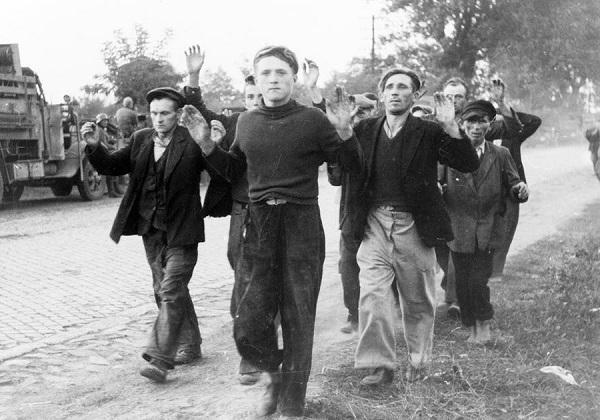
Blitzkrieg in Europe
Polish resistance was broken after only a month. All this time, Germany acted only on one front, since the actions of France and Great Britain were of little initiative. The period from September 1939 to May 1940 received the characteristic name of the "Strange War". During these few months, Germany, in the absence of active action by the British and French, occupied Poland, Denmark and Norway.
The first stages of World War II were short-lived. In April 1940, Germany invaded Scandinavia. Air and naval assault forces entered key Danish cities without hindrance. A few days later, the monarch Christian X signed the capitulation. In Norway, the British and French landed troops, but he was powerless before the onslaught of the Wehrmacht. The early periods of World War II were characterized by the overwhelming advantage of the Germans over their enemy. The long preparation for the future bloodshed had an effect. The whole country worked for the war, and Hitler did not hesitate to throw all new resources into her cauldron.
In May 1940, the invasion of the Benelux began. The whole world was shocked by the unprecedented destructive bombing of Rotterdam. Thanks to their swift throw, the Germans managed to take key positions before the allies appeared there. By the end of May, Belgium, the Netherlands and Luxembourg capitulated and were occupied.
In the summer, the battles of World War II moved to French territory. In June 1940, Italy joined the campaign. Her troops attacked the south of France, and the Wehrmacht attacked the north. An armistice was soon signed. Most of France was occupied. In a small free zone in the south of the country, the Pétain regime was established, which went to cooperate with the Germans.
Africa and the Balkans
In the summer of 1940, after Italy entered the war, the main theater of operations moved to the Mediterranean. The Italians invaded North Africa and attacked British bases in Malta. On the "Black Continent" then there was a significant number of English and French colonies. The Italians at first concentrated on the eastern direction - Ethiopia, Somalia, Kenya and Sudan.
Some French colonies in Africa refused to recognize the new government of France headed by Pétain. Charles de Gaulle became the symbol of the national struggle against the Nazis. In London, he created a liberation movement called "Fighting France". British troops, together with de Gaulle's detachments, began to recapture the African colonies from Germany. Equatorial Africa and Gabon were liberated.
In September, the Italians invaded Greece. The attack took place against the background of the battles for North Africa. Many fronts and stages of World War II began to intertwine with each other due to the ever-increasing expansion of the conflict. The Greeks managed to successfully resist the Italian onslaught until April 1941, when Germany intervened in the conflict, occupying Hellas in just a few weeks.
Simultaneously with the Greek campaign, the Germans launched the Yugoslav campaign. The forces of the Balkan state were split into several parts. The operation began on April 6, and on April 17 Yugoslavia capitulated. Germany in World War II looked more and more like an undisputed hegemon. Pro-fascist puppet states were created on the territory of occupied Yugoslavia.
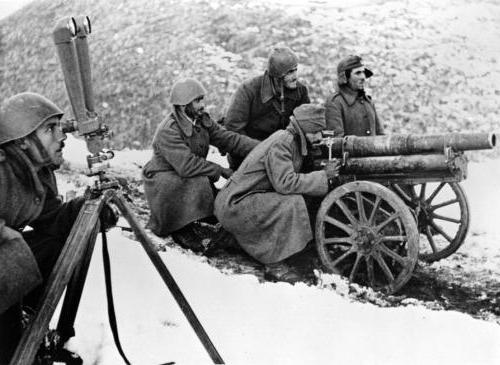
Invasion of the USSR
All previous stages of the Second World War faded in scale compared to the operation that Germany was preparing to carry out in the USSR. The war with the Soviet Union was only a matter of time. The invasion began exactly after the Third Reich occupied most of Europe and was able to concentrate all its forces on the Eastern Front.
Parts of the Wehrmacht crossed the Soviet border on June 22, 1941. For our country, this date was the beginning of the Great Patriotic War. Until the last moment, the Kremlin did not believe in the German attack. Stalin refused to take the intelligence data seriously, considering it disinformation. As a result, the Red Army was completely unprepared for Operation Barbarossa. In the early days, airfields and other strategic infrastructure in the west of the Soviet Union were bombed without hindrance.
The USSR in World War II was faced with another German blitzkrieg plan. In Berlin, they were going to capture the main Soviet cities of the European part of the country by winter. For the first few months everything went according to Hitler's expectations. Ukraine, Belarus, the Baltic States were completely occupied. Leningrad was under blockade. The course of World War II brought the conflict to a key turning point. If Germany defeated the Soviet Union, she would have no opponents left, except for overseas Great Britain.
The winter of 1941 was approaching. The Germans were in the vicinity of Moscow. They stopped on the outskirts of the capital. On November 7, a festive parade was held dedicated to the next anniversary of the October Revolution. Soldiers went directly from Red Square to the front. The Wehrmacht was stuck a few dozen kilometers from Moscow. The German soldiers were demoralized by the most severe winter and the most difficult conditions of warfare. On December 5, the Soviet counteroffensive began. By the end of the year, the Germans were driven back from Moscow. The previous stages of the Second World War were characterized by the total advantage of the Wehrmacht. Now the army of the Third Reich has stopped its world expansion for the first time. The battle for Moscow was the turning point of the war.
Japanese attack on the USA
Until the end of 1941, Japan remained neutral in the European conflict, while at the same time fighting with China. At a certain moment, the country's leadership faced a strategic choice: to attack the USSR or the USA. The choice was made in favor of the American version. On December 7, Japanese aircraft attacked the naval base at Pearl Harbor in Hawaii. As a result of the raid, almost all American battleships and, in general, a significant part of the American Pacific Fleet were destroyed.
Until that moment, the United States did not openly participate in World War II. When the situation in Europe changed in favor of Germany, the American authorities began to support Great Britain with resources, but they did not interfere in the conflict itself. Now the situation has changed 180 degrees, since Japan was an ally of Germany. The day after the attack on Pearl Harbor, Washington declared war on Tokyo. Great Britain and its dominions did the same. A few days later, Germany, Italy and their European satellites declared war on the United States. Thus, the contours of the unions that clashed in a face-to-face confrontation in the second half of the Second World War finally took shape. The USSR had been at war for several months and also joined the anti-Hitler coalition.
In the new 1942, the Japanese invaded the Dutch East Indies, where they began to seize island after island without much difficulty. At the same time, the offensive in Burma developed. By the summer of 1942, Japanese forces controlled all of Southeast Asia and much of Oceania. The United States in World War II changed the situation in the Pacific theater of operations somewhat later.
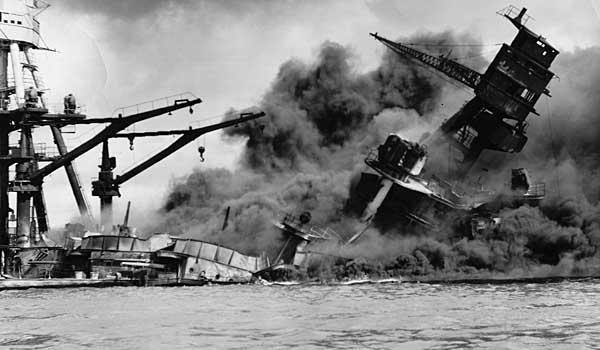
Soviet counteroffensive
In 1942, the Second World War, the table of events of which, as a rule, includes basic information, found itself at its key stage. The forces of the opposing alliances were approximately equal. The turning point came towards the end of 1942. In the summer, the Germans launched another offensive in the USSR. This time their key target was the south of the country. Berlin wanted to cut off Moscow from oil and other resources. For this it was necessary to cross the Volga.
In November 1942, the whole world anxiously awaited news from Stalingrad. The Soviet counter-offensive on the banks of the Volga led to the fact that since then the strategic initiative has finally been with the USSR. In World War II, there was no more bloody and large-scale battle than the Battle of Stalingrad. The total losses of both sides exceeded two million people. At the cost of incredible efforts, the Red Army stopped the Axis offensive on the Eastern Front.
The next strategically important success of the Soviet troops was the Battle of Kursk in June - July 1943. That summer, the Germans made their last attempt to seize the initiative and launch an offensive against the Soviet positions. The plan of the Wehrmacht failed. The Germans not only did not succeed, but also left many cities in central Russia (Orel, Belgorod, Kursk), while following the "scorched earth tactics". All tank battles of the Second World War were marked by bloodshed, but the battle of Prokhorovka became the largest. It was a key episode of the entire Battle of Kursk. By the end of 1943 - the beginning of 1944, Soviet troops liberated the south of the USSR and reached the borders of Romania.

Allied landings in Italy and Normandy
In May 1943, the Allies cleared North Africa of the Italians. The British fleet began to control the entire Mediterranean Sea. The earlier periods of World War II were characterized by Axis successes. Now the situation has become just the opposite.
In July 1943, American, British and French troops landed in Sicily, and in September - on the Apennine Peninsula. The Italian government renounced Mussolini and a few days later signed a truce with advancing opponents. The dictator, however, managed to escape. Thanks to the help of the Germans, he created the puppet republic of Salo in the industrial north of Italy. The British, French, Americans and local partisans gradually recaptured more and more new cities. On June 4, 1944, they entered Rome.
Exactly two days later, on the 6th, the Allies landed in Normandy. So the second or Western Front was opened, as a result of which the Second World War was ended (the table shows this event). In August, a similar landing began in the south of France. On August 25, the Germans finally left Paris. By the end of 1944, the front had stabilized. The main battles took place in the Belgian Ardennes, where each of the parties made, for the time being, unsuccessful attempts to develop their own offensive.
On February 9, as a result of the Colmar operation, the German army stationed in Alsace was surrounded. The Allies managed to break through the defensive Siegfried Line and reach the German border. In March, after the Meuse-Rhine operation, the Third Reich lost territories beyond the western bank of the Rhine. In April, the Allies took control of the Ruhr industrial region. At the same time, the offensive in northern Italy continued. April 28, 1945 fell into the hands of the Italian partisans and was executed.
Capture of Berlin
Opening a second front, the Western allies coordinated their actions with the Soviet Union. In the summer of 1944, the Red Army began to attack. Already in the fall, the Germans lost control of the remnants of their possessions in the USSR (with the exception of a small enclave in western Latvia).
In August, Romania withdrew from the war, which had previously acted as a satellite of the Third Reich. Soon the authorities of Bulgaria and Finland did the same. The Germans began to hastily evacuate from the territory of Greece and Yugoslavia. In February 1945, the Red Army carried out the Budapest operation and liberated Hungary.
The path of the Soviet troops to Berlin ran through Poland. Together with her, the Germans also left East Prussia. The Berlin operation began at the end of April. Hitler, realizing his own defeat, committed suicide. On May 7, an act of German surrender was signed, which entered into force on the night of the 8th to the 9th.
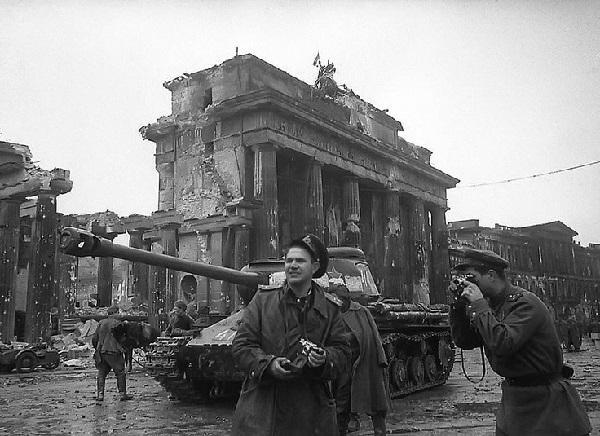
Defeat of the Japanese
Although the war ended in Europe, bloodshed continued in Asia and the Pacific. The last force to resist the allies was Japan. In June, the empire lost control of Indonesia. In July, Britain, the United States and China presented her with an ultimatum, which, however, was rejected.
On August 6 and 9, 1945, the Americans dropped atomic bombs on Hiroshima and Nagasaki. These cases were the only ones in human history when nuclear weapons were used for combat purposes. On August 8, the Soviet offensive began in Manchuria. The Japanese Surrender Act was signed on September 2, 1945. This ended World War II.
Losses
Studies are still underway on how many people were injured and how many died in World War II. On average, the number of lives lost is estimated at 55 million (of which 26 million are Soviet citizens). The financial damage amounted to 4 trillion dollars, although it is hardly possible to calculate the exact figures.
Europe has been hardest hit. Its industry and agriculture were restored for many more years. How many died in World War II and how many were destroyed became clear only after some time, when the world community was able to clarify the facts about Nazi crimes against humanity.
The largest bloodshed in the history of mankind was carried out by completely new methods. Entire cities perished under the bombing, centuries-old infrastructure was destroyed in a few minutes. The genocide of the Second World War organized by the Third Reich, directed against Jews, Gypsies and the Slavic population, terrifies with its details to this day. German concentration camps became real "death factories", and German (and Japanese) doctors conducted cruel medical and biological experiments on people.
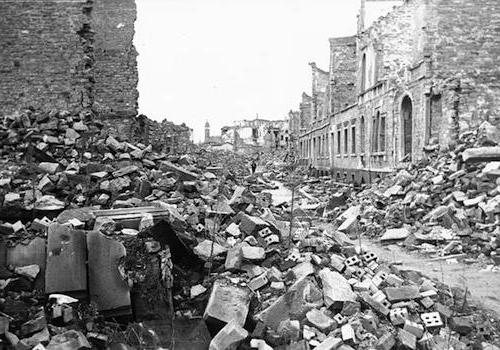
Results
The results of the Second World War were summed up at the Potsdam Conference, held in July - August 1945. Europe was divided between the USSR and the Western allies. Communist pro-Soviet regimes were established in the eastern countries. Germany lost a significant part of its territory. was annexed to the USSR, several more provinces passed to Poland. Germany was first divided into four zones. Then, on their basis, the capitalist FRG and the socialist GDR emerged. In the east, the USSR received the Kuril Islands, which belonged to Japan, and the southern part of Sakhalin. The communists came to power in China.
Western European countries after World War II lost a significant part of their political influence. The former dominant position of Great Britain and France was occupied by the United States, which suffered less than others from German aggression. The process of disintegration of colonial empires started. In 1945, the United Nations was established to maintain world peace. Ideological and other contradictions between the USSR and the Western allies led to the start of the Cold War.



